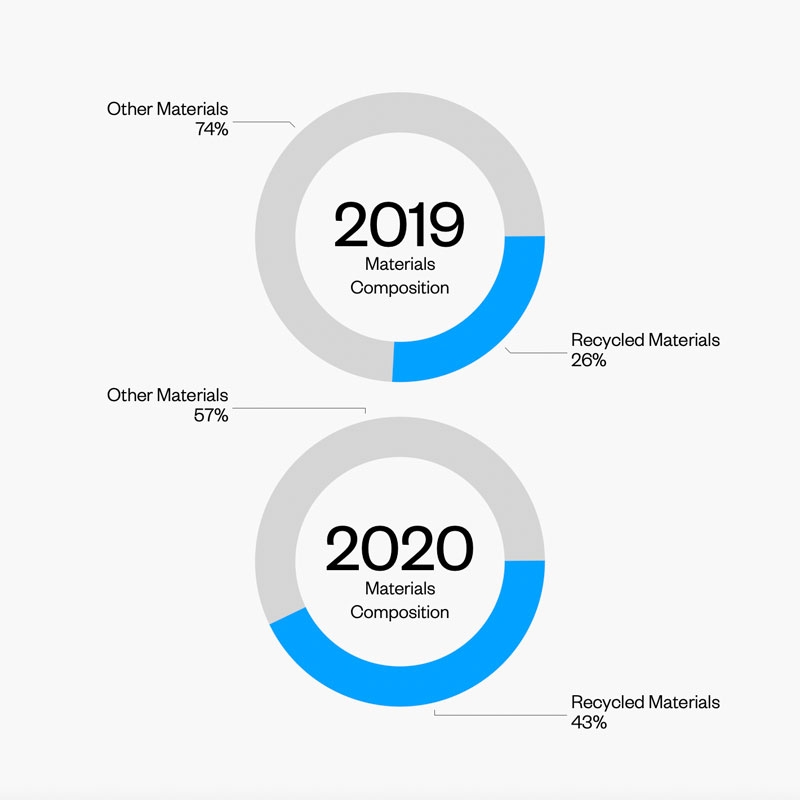Getting to Zeroº
In 2019, we began our Zeroº climate action initiative—a commitment to reducing our ecological footprint and eliminating emissions to help limit global temperature growth to 1.5ºC.
- Zero Net Carbon Emissions
- Zero New Plastic
- Zero Waste

Progress towards science-based targets
The apparel and footwear industry is one of the top contributors to global carbon emissions, contributing 2.2 billion tons of greenhouse gases—over 10% of the global annual carbon output according to the United Nations. (That’s more than aviation and the shipping industries combined.
The significant energy used for extraction and production of materials, as well as the operation of factories, is largely powered by coal. We believe that through science, there’s a better way.
Since 2019, we’ve offset all of our carbon emissions and have been certified Climate Neutral. However, measurement and offsetting won’t get us to zero alone—to reach our targets we also have to dramatically reduce our emissions. This past year we’ve made big strides through innovation and optimization of our supply chain, materials, and manufacturing.
2020 Carbon Footprint Analysis
We recently completed our carbon emissions assessment for 2020 as part of our Climate Neutral Certification. In the past year alone we’ve made massive progress, reducing our average unit emissions by 25%. What follows below is a breakdown of those findings.


1. Increased Use of Recycled Materials
Raw materials are one of the biggest contributors to global CO2 emissions, particularly virgin Polyester, which relies on carbon-intensive extraction and refinement of crude oil. Recycled Polyester bypasses these costly steps and reduces emissions by 52%. This past year we utilized more than 50% Recycled Polyester in launches across our Apollo, Aero, Composite, Responsive, Atlas, and Hybrid collections, saving nearly 1kg of CO2 per product.
2. Dramatic Reduction of Air Freight
The real hero of our 2020 story is this chart. A typical garment we send by air-freight emits 4.5kg of CO2, compared to 0.5kg by sea—a difference of 9x. Planes have to go fast and go up, utilizing a ton of energy. Reducing air freight from 71% of shipments to 29% saved nearly 2kg of CO2 alone.


3. Zero-Waste Manufacturing
To support front-line workers and our community, we rapidly developed and produced masks utilizing a zero-waste additive manufacturing process we call 3D Print-Knit—resulting in 26% of all units produced in 2020. 3D Print-Knit’s unique capabilities saved 35% of the material that would have otherwise been wasted using traditional cut and sew techniques, mitigating these material-associated emissions.
